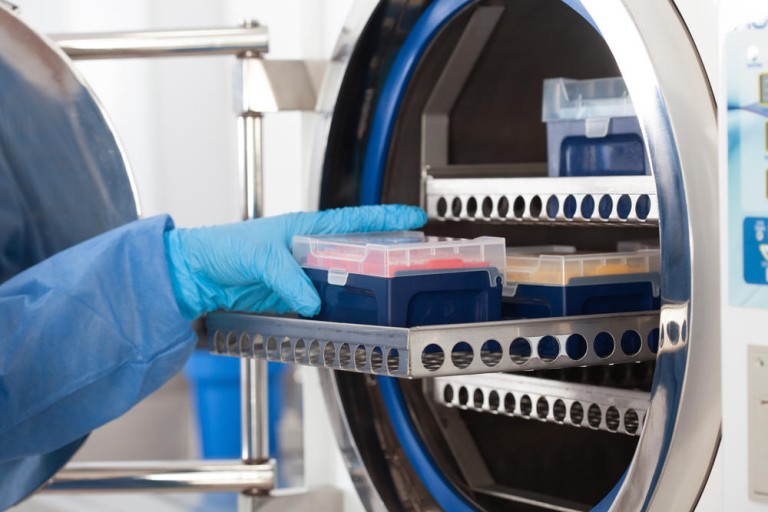
When you own or operate a pharmaceutical lab or cleanroom, your team needs to be aware of the typical conditions for autoclave sterilization, so you can adhere to industry best practices, following time-honored protocols.
Organizations rely on autoclaves to sterilize reusable instruments, tools and other objects, using hot, pressurized steam for a specific amount of time. Steam is necessary when detergents or heat alone will not suffice to sterilize laboratory instruments.
We will explore how you must meet certain conditions for proper sterilization when using autoclaves.
Necessary Conditions for Sterilization in Autoclaves
Steam sterilizers (another term for autoclaves) are designed to kill dangerous spores, viruses, fungi, and bacteria on objects you place inside the chamber.
Heat in the autoclave destroys proteins in these contaminants, rendering them ineffective. The necessary autoclave conditions for sterilization include using the correct ratio of steam vapor and moisture at high temperature under pressure for the recommended time for your scenario.
How Autoclaves Work in Cleanrooms and Pharmaceutical Production Facilities
Autoclaves typically run at temperatures ranging from 250 degrees Fahrenheit to 275 F. Consult the manufacturer’s recommendations to determine how long the sterilization process should run.
Keep in mind that steam used for sterilization must be in a ratio of 97% steam vapor and 3% moisture, for the most effective transfer of heat. If the moisture falls below 3%, the steam is considered superheated, being so dry that it cannot transfer heat efficiently, rendering it insufficient to sterilize your tools and other items.
Autoclaves function in three main phases:
Conditioning: In the conditioning phase, the autoclave removes air from the chamber with a vacuum process or by flushing steam with movement supplied by pressure pulses. Gravity-style sterilizers displace the chamber’s air with steam, pushing the air out of the drain. Exposure: After evacuating all the air, the drain closes. Then, the autoclave pumps steam under increasingly higher pressure according to the settings you program, exposing objects to the correct level of heated, pressurized steam over the specific amount of time needed to destroy proteins for sterilization. Exhaust: After the exposure phase, the autoclave’s sterilizer drain opens to evacuate the steam, which lowers the device’s pressure so the objects inside can start drying out.
How Often You Need to Conduct Sterility Monitoring
Monitor your autoclave at least once per week, following the guidelines of the Centers for Disease Control and Prevention (CDC), the Association for the Advancement of Medical Instrumentation (AAMI), and the American National Standards Institute (ANSI). If you run a busy, high-volume facility, you may need to monitor the sterilizer every day. Consult with our experts to help you determine the most appropriate schedule for autoclave monitoring.
The Importance of Regularly Maintaining and Calibrating Your Autoclaves
To extend the useful working life of your autoclave and ensure it works correctly for every sterilization cycle, you must conduct regular maintenance. It’s also essential to calibrate autoclaves. After initial calibration at the factory, autoclaves may drift out of calibration after repeated use.
An autoclave that is incorrectly calibrated may cause unwanted fluctuations in pressure or temperature that could compromise the effectiveness of the sterilization process.
You can determine that it’s time to do maintenance by examining temperature-sensitive and chemical-indicator tapes in the autoclave, or by putting control vials with biological contaminants inside the chamber to see if you are achieving the correct sterilization conditions.
Technical Safety Services Is the Preferred Resource for Autoclave Sterilization Services
If you require guidance in setting up and using autoclaves, we’re here to help.
The team at Technical Safety Services is standing by to consult and assist you with autoclave calibration services, so you can ensure your facilities adhere to industry best practices and the recommendations of the CDC, AAMI, and ANSI.
To learn more about our capabilities to support your sterilization protocols with autoclaves, please contact us today.

